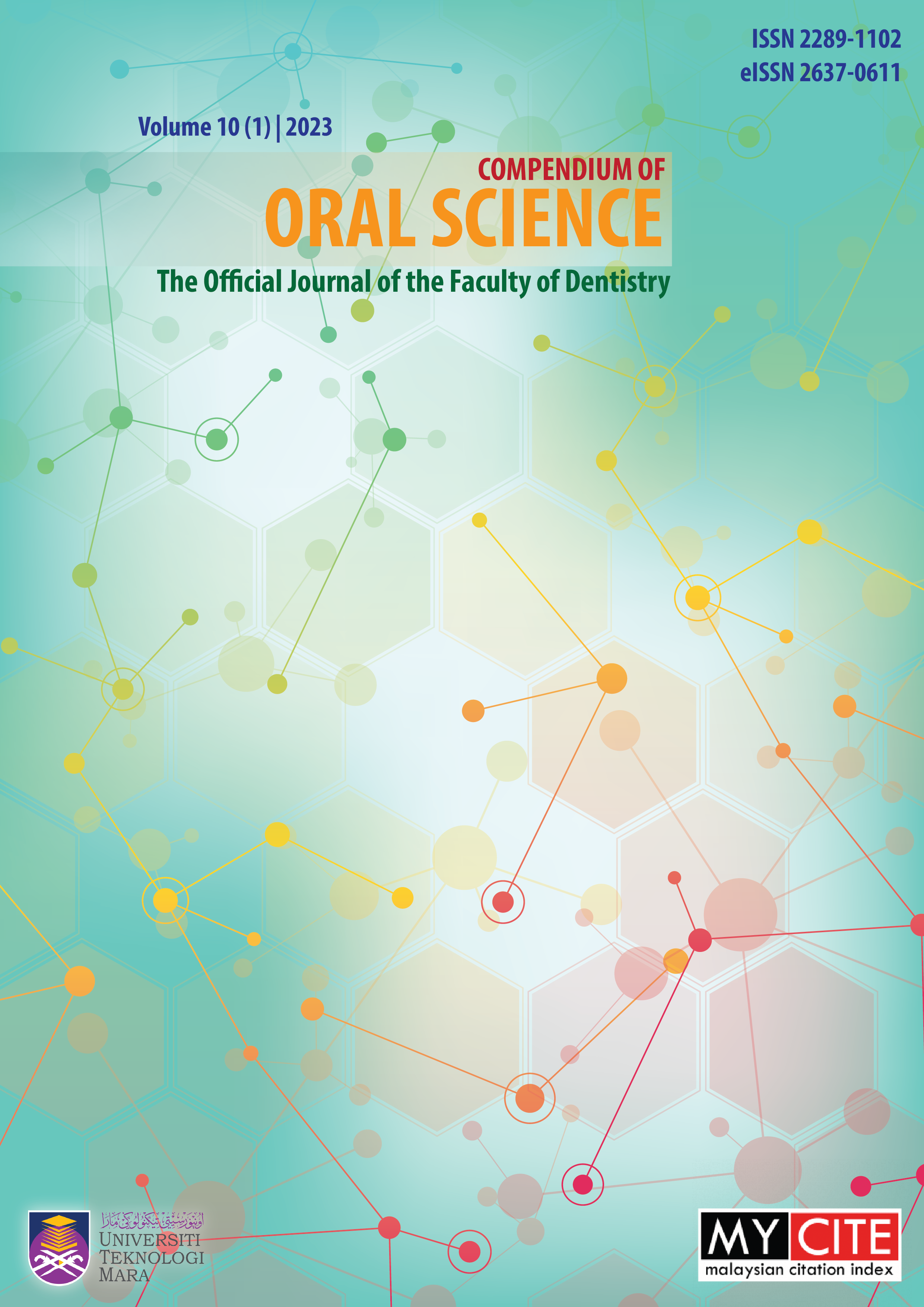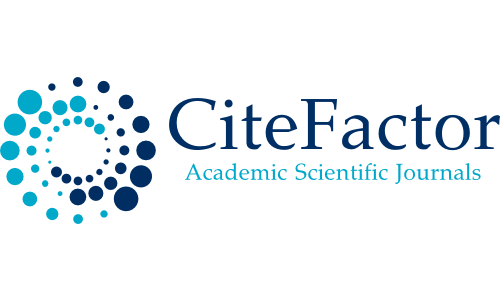Determining Artificial Ageing Methods and Evaluating Properties of Universal Composite Resin: A Review and Proposed Protocol
DOI:
https://doi.org/10.24191/cos.v10i1.21626Keywords:
coffee, colour stability, microhardness, Omnichroma, SEM-EDS, static immersion, surface roughness, thermocycling, translucency parameter, universal compositeAbstract
Objective: Our aim is to propose a method for determining a more convenient artificial ageing (AA) protocol, which may be used to compare the optical / mechanical properties of universal to conventional composite. Methods: Artificial ageing (AA) protocol was adapted from (Alp et al., 2018) for thermocycling and (Jasin et al., 2018) for static immersion, which arbitrarily simulating 6 and 7 months of oral environment, respectively. In phase 1, Filtek Z350XT® will be used to be immersed in coffee solution (test group) with distilled (control group) water. Colour changes will be measured and calculated using the CIEDE2000 formula and data will be statistically analysed to determine a meeting time point of colour change occurrence. Measurement will be repeated thrice to validate the new static emersion method. In phase 2, this new static immersion AA protocol will be used to compare Omnichroma's® colour stability with translucency to the Filtek Z350XT®. In phase 3, SEM EDS will be used to measure quantitative and qualitatively the occurrence of subsurface properties changes in Omnichroma® and Filtek Z350XT®. Finally, the discs’ microhardness will be evaluated. Significance: Presently, it is very difficult to precisely simulate the oral environment. In comparison to thermocycling, static immersion is a more convenient AA method. Establishing an evidence-based protocol may well potentially serve as a guide for researchers to assuredly select the more simplified AA protocol for future dental material development and clinical usage scenarios.
Downloads
Published
How to Cite
Issue
Section
License
Copyright (c) 2024 Compendium of Oral Science

This work is licensed under a Creative Commons Attribution-NonCommercial 4.0 International License.
Materials contained in the journal may be reproduced for educational purposes provided that both the author(s) and the journal are appropriately recognised; otherwise duplication is not permitted. No articles, reports, or portions there of may be translated into other languages, published in books, journals, magazines, or any other print form without written permission from the authors and from the journal.
Disclaimer: The statements, opinions and data expressed in the articles and reports herein are those of the author(s) and not of the publisher and the editor(s). The publisher and the editor(s) disclaim responsibility for any injury to persons or property resulting from any schemes, methods, instructions or ideas referred to in the content.















